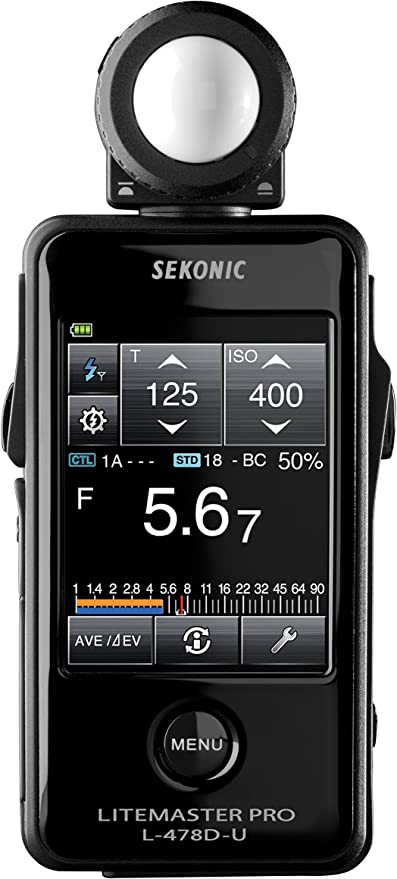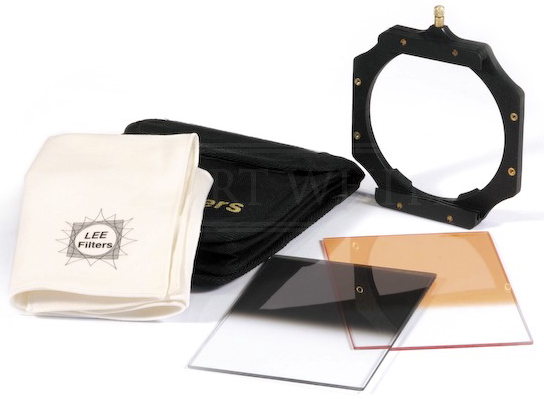Many young photographers will probably not
read this article and regard the light meter as a remnant of a passing
era of photography - not so!
Digital cameras have created a new generation of 'lazy photographers'
and the root cause is the manufacturers' who in their desire to seduce
the customer, promote and sell digital cameras with technology that
takes away most of the hard work and weakens the thought process.
This is further compromised by companies who sell software
packages for post processing digital camera 'RAW' image files on a computer
whereby the photographer can adjust them and iron out any defects in the
images.
"Why would I
want a light meter when my camera's exposure meter does all the work for
me and in any case, I use a
modern electronic viewfinder which cuts out
all the hassle because
'what you see is what you get'
and
I can adjust the exposure until the scene is to my liking in the
viewfinder.
Why use a light meter or even hardware filters when my
 Adobe Lightroom
software and post processing can iron out all the defects of the
lighting in an image"
Adobe Lightroom
software and post processing can iron out all the defects of the
lighting in an image"
The purist photographer and most professionals
would shake their heads in
disbelief. Using an external 'hand held' light meter which has been
calibrated to your camera (many already have presets to match most of
the popular professional cameras) is the one piece of equipment
which is invaluable for professional photography. Professional
photography is not just about earning money or owning a professional
camera it is about applying techniques which in themselves, are
professional in approach. There is no substitute for correct appliance
to your photography and it is part of the development of your skills
over a period of time.
Unfortunately many of the young photographers of today live is a fast
world where their skills are backed up by
the assumption that the
technology of a digital camera will support their photographic efforts
and
post processing in Adobe Lightroom
software will correct any image defects. You cannot blame Adobe, most
photographers, myself included, have embraced the technology but our
photography has suffered as a result. The world is now full of digital
artists, hacking at 'RAW' image files in post processing to produce that
work of art.
The Reliance on Adobe Lightroom Software
It would be nice to think that the camera
exposure meter is 100% accurate but that is not the case. So many
'hobbyist' photographers place a great deal of reliance on it and
invariably shoot
'RAW' image files which can be tweaked in Adobe Lightroom software
during post processing at a later stage to open up the dynamic range.
There is a great deal of scope using Lightroom and the photographer can
bring down the highlights whereby the harsh white reflected from the
nameplate of a ship in the harbour can be reduced whereby you can
clearly read the name and the foreground shadows around the hull can be
lifted so that you can see the waterline and the hull colour where it
enters the water whilst the bright sky can be cleaned up to bring out
the resolution and dynamic range in the clouds. All of this can be
achieved providing the photographer has not BLOWN out all the resolution
in the sky and lost the detail in the shadows.
The Inefficiency of the Camera Exposure Meter
Once a photographer recognises the inefficiency of the camera exposure
meter which manifests itself in very uneven lighting conditions and high
instances of incident light falling on the scene he will begin to
realise that even looking through an electronic viewfinder he might not
'get what he sees'. Even adjusting for the visual of the scene in the
EVF does not mean that later you will not be using Lightroom software to
drop the highlights, raise the shadows and raising the vibrancy and
saturation to make the image 'pop'.
The camera in aperture priority mode and using evaluative (matrix) metering reads reflective light
from a scene and calculates the shutter speed in relation to the ISO
rating and the aperture set by the photographer. It also produces a
histogram of the reading for the display screen, either in the
viewfinder and/or the LCD screen. For a large proportion of even
balanced light scenes this will prove relatively accurate but in scenes
where the light is uneven and where there is incident light which falls
on the subject, the meter
will struggle to accurately determine the parameters. The camera
exposure meter can cause the settings to overexpose the highlights and
the photographer when attempting to adjust the exposure compensation can
underexpose the image. The camera's exposure
spot meter in conjunction with the
camera's dynamic range capability can assist to provide more evenly
balanced parameters but the spot meter still cannot compensate for
incident light.
Even the most pedantic landscape photographer who has taken a great deal
of trouble in setting up his camera and tripod, the ISO, aperture and
shutter speed and placed his reliance on the exposure meter and the LCD
screen, might return home to spend a few hours tweaking the 'RAW' image
file using Adobe Lightroom
software.
Lightroom is akin to the darkroom development of film and it
is becoming a fact of life in the digital age. To a certain extent it
does impact on the photographer who desires to capture a scene using his
skills with the the minimum of post processing but over a period of time
he may spend more and more time in the digital darkroom whereby his
photographic skills are blended into digital
artistry.

To break the dominance of
Adobe Lightroom and reduce post processing and file conversion to the
absolute minimum the photographer would have to spend a fair bit of
money on additional accessories. A 'hand held' light meter with incident
light and spot metering; both metering systems calibrated to the
camera's dynamic range to assist in the production of
a
'RAW' image file
which is correctly
balanced for exposure and dynamic range AND
Lee filters to froth the water in a
waterfall,
graduate uneven light and to
'pop' the colours in the image for effect.
An excellent
Sekonic L-478D-U Litemaster Pro Light Meter
will cost around £354.00 vat inclusive from Amazon and a starter
pack with lens adapter from
Lee Filters, around £270.00
vat inclusive in the UK but realistically for professional landscape
photography the Lee filter package costs could rise to as much as
£550.00 for the extra filters required.
Videos on the Light Meter and more on the
Sekonic Range of Light Meters
Using a Light Meter for
Landscapes with Outdoor
Practical Tips (24.02 on the
video is worth checking) -

